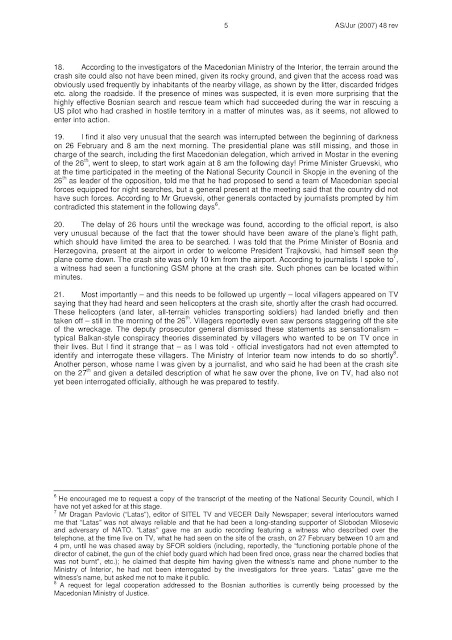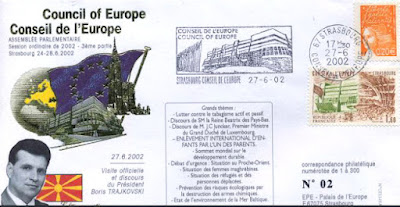29 февруари 2024
THE MARTENITSA
Buona Primavera con la Martenitsa
Buona Primavera con la Martenitsa
| ||
di Antonietta Caccia
|
26 февруари 2024
20 ГОДИНИ ОТ СМЪРТТА НА ПРЕЗИДЕНТА БОРИС ТРАЙКОВСКИ - 26 ФЕВРУАРИ 2004г.
Източник : https://assembly.coe.int/nw/xml/XRef/X2H-Xref-ViewHTML.asp?FileID=11443&lang=EN
Doc. 11172
1 February 2007
Request for an investigation to clarify the allegedly suspicious death of former President Boris Trajkovski of “the former Yugoslav Republic of Macedonia”
Motion for a resolution
presented by Mr Gross and others
|
This motion has not been discussed in the Assembly and commits only the members who have signed it |
The member states of the Council of Europe are committed to strengthen democracy and the rule of law.
2. The President of “the former Yugoslav Republic of Macedonia”, Boris Trajkovski and eight others on the same plane died tragically on 26 February 2004 in the vicinity of Mostar airport in Bosnia and Herzegovina.
3. The conclusions of various investigative reports and news reports have in part contradicted each other and left the public and the international community uncertain as to the cause of his death.
4. To enhance democracy and the rule of law in this situation, it seems imperative to launch a thorough investigation in order to establish a profound understanding of the circumstances surrounding the death of President Boris Trajkovski.
Signed 1:
GROSS, Andreas, Switzerland, SOC
ATEŞ, Abdülkadir, Turkey, SOC
ÇAVUŞOĞLU, Mevlüt, Turkey, EDG
de PUIG, Lluís Maria, Spain, SOC
EÖRSI, Mátyás, Hungary, ALDE
GARDETTO, Jean-Charles, Monaco, EPP/CD
GLESENER, Marcel, Luxembourg, EPP/CD
HERKEL, Andres, Estonia, EPP/CD
JACOBSEN, Bjørn, Norway, UEL
KOSACHEV, Konstantin, Russian Federation, EDG
LINDBLAD, Göran, Sweden, EPP/CD
MARTY, Dick, Switzerland, ALDE
SCHREINER, Bernard, France, EPP/CD
SEVERINSEN, Hanne, Denmark, ALDE
SLUTSKY, Leonid, Russian Federation, SOC
SMIRNOVA, Svetlana, Russian Federation, EDG
van den BRANDE, Luc, Belgium, EPP/CD
VAREIKIS, Egidijus, Lithuania, EPP/CD
von SYDOW, Björn, Sweden, SOC
WODARG, Wolfgang, Germany, SOC
WOHLWEND, Renate, Liechtenstein, EPP/CD
1
SOC: Socialist Group
EPP/CD: Group of the European People’s
Party
ALDE: Alliance of Liberals and Democrats
for Europe
EDG: European Democratic Group
UEL: Group of the Unified European Left
Източник :
https://assembly.coe.int/CommitteeDocs/2007/20071120_Trajkovski_E.pdf
СВЪРЗАНА ТЕМА НА ТОЗИ БЛОГ:
ПАМЕТ: 65 ГОДИНИ ОТ РОЖДЕНИЕТО НА БОРИС ТРАЙКОВСКИ
http://toshev.blogspot.com/2021/06/65.html























